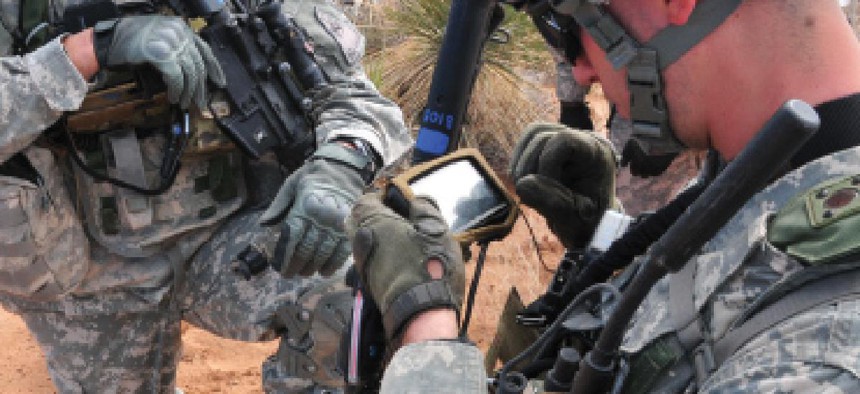DISA 'all in' on mobile

With approvals issued for more mobile operating system implementation guides, DOD is pushing ahead for a wider selection and faster procurement of wireless devices.

DOD is 'all in' on mobile devices, program manager says. (Stock image)
The Defense Information Systems Agency on May 17 announced approvals for security technical implementation guides for Apple iOS 6, Samsung Knox and new Blackberry operating systems, clearing the way for more selection and faster procurement of mobile devices in the Defense Department.
STIG approvals mean that the operating systems get the green light to connect to DOD networks, whether the devices are being used in pilot programs or connecting to the forthcoming mobile device management framework. A contract for the MDM system is currently in the source selection phase and is an award is due early this summer, according to DISA.
The announcements are part of ongoing efforts to support mobility implementation across DOD, where the various levels of security classifications complicate management of the infrastructure and operations behind the mobile devices.
"We're all in. We're device-agnostic. We want to support the Androids, the Apples, the Windows and the Blackberry devices," John Hickey, program manager for DOD mobility at DISA, said May 15 at the FOSE conference in Washington, D.C. "We want to create competition to lower the overall costs. That's the goal of the department – it's really about providing the devices to enable backside information that is required. And since DOD has unclassified but [for official use only] and various levels of classification...we've got to look at the entire realm."
The STIG approval, MDM framework and the Pentagon's mobile strategy and implementation plan are all in keeping with plans to establish a DOD-wide mobile enterprise that incorporates new technologies by accelerating acquisition cycles – no matter which vendor the technologies may come from.
"We're not looking for perfect solutions; we're taking the best that industry has today and we're using that and then looking for what's coming next," Hickey said. "We can't just say no anymore. We can't just give people a device that's so locked down you can't do anything with. How do we make a policy that enables that?"
That is something DOD agencies, DISA in particular, are working on amid plans for an enterprise MDM capability and app store, also in the source selection phase, slated to support 100,000 devices by February. Currently, DOD has more than 600,000 mobile devices in use, including roughly 470,000 Blackberries, 41,000 Apple devices and 8,700 Android devices.
A critical part of that goal – and in DOD mobility efforts in general – is shrinking the time it takes for devices to gain department approval and get into the hands of users. In the past that process has taken so long that technologies were obsolete by the time they were issued.
"Within the Department of Defense [people] are frustrated, and they're frustrated because it takes a while to get technology into the hands of folks who want to use it," Hickey said.
Hickey said he's currently working on 90-day acquisition cycles, but even that could change. On April 30 at another event in Washington, Maj. Gen. Robert Wheeler, DOD deputy CIO for command, control, communications, computers and information infrastructure, said the Pentagon is targeting a 30-day process – an even loftier goal.
"That's going to require us to look at things a little differently and we think we have at least straw man of how we're going to get there," Wheeler said. "We can't afford anything [longer] than 30 days, because this really makes a difference in the field, in taking care of business and in being able to do more with less."


